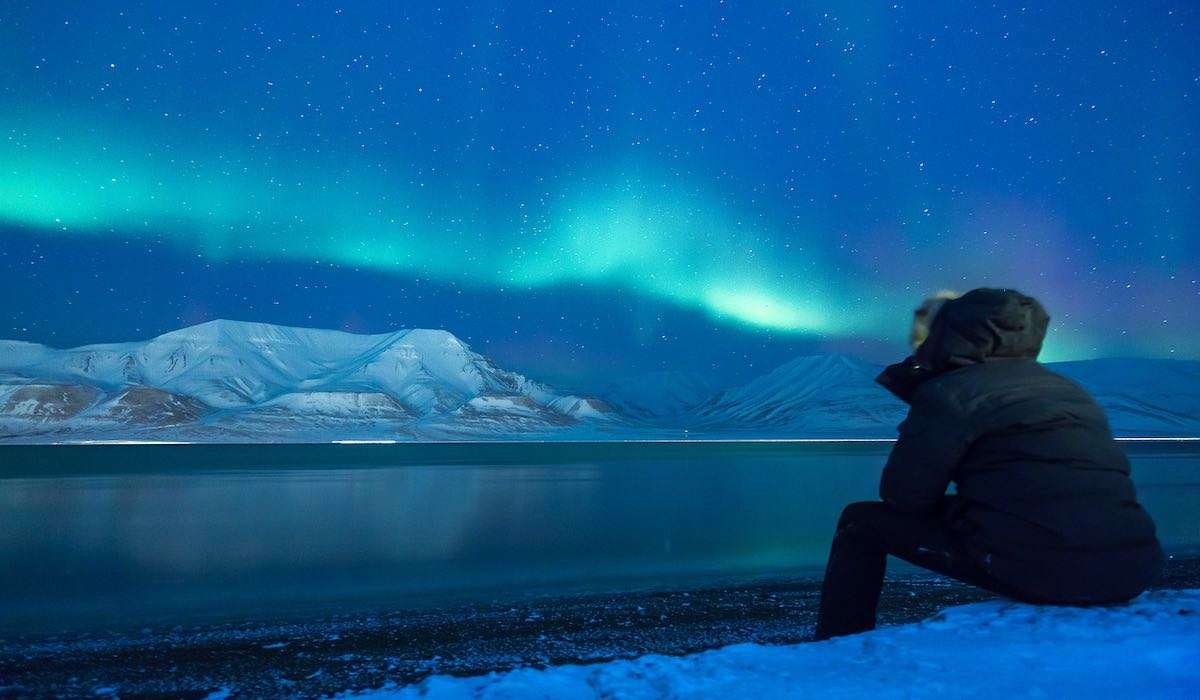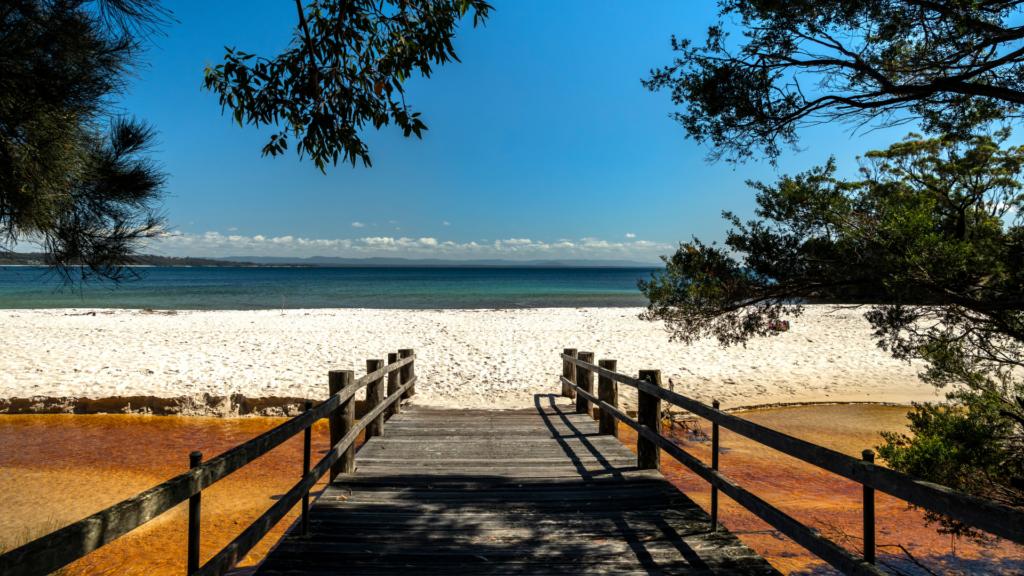Unveiling the Secrets of Iceland’s Dancing Skies Ah, the Northern Lights! Nature’s very own celestial ballet, where vibrant colors dance across the night sky in a mesmerizing display. And when it comes to witnessing this magical phenomenon, there’s no place quite like Iceland.
Are you a travel enthusiast or a couple seeking an awe-inspiring experience? Well, you’ve come to the right place! In this blog post, we’ll unlock the secrets of the best time to see the Northern Lights in Iceland. Get ready for an informative, conversational, and humorous journey!
I. When is the best time to see Northern lights in Iceland
The best time to see the Northern Lights in Iceland is during the winter months, from September to April. Within this period, the peak Northern Lights season is considered to be between September and April. The long nights and extended darkness provide optimal conditions for witnessing the captivating auroras. It’s important to align your visit with this season and keep an eye on solar activity and weather conditions. Remember, while the lights can be unpredictable, Iceland offers breathtaking landscapes and a unique cultural experience, ensuring that your trip will be filled with wonder and adventure regardless of the Northern Lights’ presence.
II. The Dance of Lights: When to Witness the Northern Lights in Iceland

Introduction: The Northern Lights, nature’s most captivating light show, beckon adventurers to witness their ethereal dance across the night sky. While Iceland offers a front-row seat to this celestial spectacle, knowing the best time to see the Northern Lights is essential for a memorable experience. In this blog post, we will unveil the prime viewing season, highlight the significance of winter months and long nights, and delve into the specific time frames within the peak season that offer the highest chances of witnessing the Northern Lights in all their splendor.
The Best Time to See Northern Lights in Iceland
A. The Prime Northern Lights Viewing Season
When it comes to experiencing the Northern Lights in Iceland, the prime viewing season stretches from September to April. During these months, the conditions align to provide an increased likelihood of witnessing this awe-inspiring phenomenon. From the crisp air of autumn to the snow-dusted landscapes of winter and the gradual return of longer days in spring, this season offers an enchanting backdrop for the dance of lights.
B. Embracing Winter and Long Nights
Winter holds a special allure for Northern Lights enthusiasts. Iceland’s high latitude ensures extended periods of darkness, which are ideal for optimal Northern Lights visibility. The long nights create a canvas where the vibrant colors of the Aurora Borealis can truly shine. Bundle up in warm layers, embrace the wintry charm, and venture out into the darkness to witness this magical display.
C. The Peak Northern Lights Season
September to April Within the September to April timeframe, certain months stand out as the peak Northern Lights season in Iceland. September and October mark the beginning of the season, with increasing darkness and a higher probability of clear skies. The peak intensifies from November to February, offering the best chances to witness the lights in their full glory. As the season progresses into March and April, the nights begin to shorten, but the Northern Lights can still grace the skies during clear, dark nights.
Remember, the Northern Lights are a natural phenomenon, and their appearance can never be guaranteed. Patience, flexibility, and a dash of luck are key ingredients for a successful Northern Lights chase. Stay informed about solar activity, monitor weather forecasts, and seek dark, clear nights to enhance your chances of witnessing this captivating dance of lights in Iceland.
Conclusion
Iceland, with its prime viewing season from September to April, provides an enchanting stage for experiencing the Northern Lights. Embrace the winter months, relish the long nights, and venture out during the peak season for the highest chances of witnessing this ethereal phenomenon. Whether you find yourself gazing at the lights in November, basking in their glory during the heart of winter, or chasing them in the transitioning months of spring, be prepared for an unforgettable encounter with nature’s most mesmerizing light show.
III. Unveiling the Mysteries of the Northern Lights: Nature’s Spectacular Symphony

I. Behold the Northern Lights
A Symphony of Nature’s Colors in Iceland Imagine standing beneath a starry night sky, as vibrant hues of green, purple, and pink begin to dance across the horizon. This breathtaking phenomenon is none other than the Northern Lights, also known as the Aurora Borealis. In this captivating blog post, we will delve into the scientific wonders behind the Northern Lights, marvel at the mesmerizing colors and patterns they create, and explore the fascinating facts and myths that surround this ethereal spectacle. So, buckle up and prepare to be enchanted!
II. What are the Northern Lights?
A. The Science Behind the Aurora Borealis
The Northern Lights are the result of a captivating scientific interplay between the Earth’s magnetic field and charged particles from the sun. When these particles collide with the Earth’s atmosphere, they release energy in the form of light, creating the majestic glow that we witness. It’s truly a symphony orchestrated by nature herself.
B. A Kaleidoscope of Colors and Patterns
One of the most enchanting aspects of the Northern Lights is the kaleidoscope of colors that paint the night sky. Shades of green dominate the show, caused by excited oxygen molecules. However, don’t be surprised to catch glimpses of red, purple, blue, and even yellow hues amidst the emerald glow. These colors intertwine and morph, forming mesmerizing patterns that captivate onlookers, evoking a sense of awe and wonder.
C. Facts and Myths Surrounding the Northern Lights
The Northern Lights have long been a source of fascination and intrigue, giving rise to numerous myths and legends across different cultures. Here are a few interesting tidbits that add to the allure of this celestial phenomenon:
- Mythical Encounters: In Norse mythology, it was believed that the Northern Lights were reflections of the armor of the Valkyries, warrior maidens who guided fallen heroes to the afterlife. These lights were seen as a celestial pathway, connecting the mortal realm to the divine.
- Solar Symphony: The intensity and frequency of the Northern Lights are closely linked to solar activity. During periods of heightened solar activity, known as solar storms or geomagnetic storms, the lights become even more vibrant and widespread, casting an even more spectacular display.
- Magnetic Delight: The best places to witness the Northern Lights align with the Earth’s magnetic field. This is why countries closer to the Arctic Circle, such as Iceland, offer prime opportunities to experience this natural phenomenon in all its glory.
- Silence of the Lights: While the Northern Lights dance across the sky, they do so in complete silence. Despite their mesmerizing visual display, they do not produce any sound. It’s a silent symphony that allows us to appreciate the serenity of the moment.
Now that we’ve unraveled the science, colors, and intriguing tales associated with the Northern Lights, it’s time to embark on your own adventure to witness this captivating phenomenon in Iceland. Prepare to be spellbound by nature’s symphony of light and immerse yourself in the magic that unfolds before your eyes.
IV. Iceland: Where Nature and the Northern Lights Converge
The Northern Lights, a mesmerizing celestial dance of colors, have long fascinated travelers from around the world. While there are several destinations where one can witness this natural spectacle, none compare to the allure of Iceland. In this blog post, we will explore why Iceland stands as one of the prime destinations to experience the Northern Lights. From its unique geographical and atmospheric conditions to its awe-inspiring landscapes and captivating attractions, Iceland is a must-visit for travel enthusiasts and couples seeking an unforgettable adventure.
III. Why Iceland?
A. Iceland: A Prime Destination for the Northern Lights
When it comes to the Northern Lights, Iceland reigns supreme. This Nordic island nation boasts a combination of factors that make it an ideal location for witnessing this celestial marvel. From its proximity to the Arctic Circle to its pristine darkness and minimal light pollution, Iceland sets the stage for an unparalleled Northern Lights experience. It’s a playground where nature’s vibrant brushstrokes light up the night sky, leaving spectators in awe.
B. Unique Geographical and Atmospheric Conditions
Iceland’s geographical and atmospheric conditions play a significant role in making it a hotspot for Northern Lights sightings. The island’s position at high latitudes provides a greater chance of intersecting with the Aurora Borealis. Additionally, its remote location and vast stretches of unspoiled landscapes minimize light pollution, creating optimal conditions for capturing the full brilliance of the Northern Lights.
C. Iceland’s Breathtaking Landscapes and Attractions
Beyond the Northern Lights, Iceland’s landscapes are a masterpiece in themselves. Imagine standing on black sand beaches, surrounded by towering cliffs and crashing waves, while the lights paint the sky above you. Iceland’s diverse and awe-inspiring scenery, from mighty waterfalls like Gullfoss and Seljalandsfoss to dramatic volcanic landscapes like Landmannalaugar and Vatnajökull National Park, provides the perfect backdrop for an unforgettable Northern Lights adventure.
But Iceland is not just about natural beauty. Its vibrant capital, Reykjavik, offers a delightful blend of culture, history, and urban charm. Explore the city’s colorful streets, indulge in delicious Icelandic cuisine, and immerse yourself in the country’s rich folklore and Viking heritage. And after a long day of exploring, relax in one of Iceland’s geothermal spas, such as the world-famous Blue Lagoon, where you can soak in warm, mineral-rich waters while gazing at the starry night sky.
Conclusion
Iceland is a land of wonder, where nature and the Northern Lights converge to create an experience like no other. From its prime location for Northern Lights sightings to its breathtaking landscapes and captivating attractions, this Nordic gem offers an adventure that will leave travel enthusiasts and couples in awe. So pack your bags, don your warmest winter attire, and get ready to chase the Northern Lights in Iceland—a journey that promises to be nothing short of extraordinary.
V, Unlocking the Secrets: Factors Affecting Northern Lights Visibility in Iceland

The Northern Lights, a natural phenomenon that never fails to leave us in awe, can be a mysterious and elusive spectacle to witness. While Iceland provides an ideal stage for these dancing lights, understanding the factors that influence their visibility is crucial for planning your Northern Lights adventure. In this blog post, we will delve into the key factors that affect Northern Lights visibility in Iceland, including solar activity, darkness and clear skies, and weather conditions. By unraveling these secrets, we will help you uncover the best time to see the Northern Lights in all their glory.
Factors Affecting Northern Lights Visibility
A. Solar Activity and Geomagnetic Storms
One of the primary factors that determine the visibility of the Northern Lights is solar activity. When the sun releases a burst of energetic particles, known as a solar flare, it can trigger a geomagnetic storm. These storms intensify the Earth’s magnetic field, resulting in more pronounced and widespread Northern Lights displays. By monitoring solar activity and keeping an eye on geomagnetic storm forecasts, you can increase your chances of witnessing a mesmerizing light show in Iceland.
B. Darkness and Clear Skies
Darkness and clear skies are essential for optimal Northern Lights viewing. Iceland’s location near the Arctic Circle provides extended periods of darkness during the winter months, increasing the opportunities to witness the lights. Moreover, clear skies are crucial to catch a glimpse of the celestial spectacle. Cloud cover can obstruct the view, so be sure to check weather forecasts and plan your Northern Lights excursion on nights when the skies are expected to be clear.
C. Weather Conditions and Cloud Cover
While darkness and clear skies are crucial, weather conditions, including cloud cover, can significantly impact the Northern Lights’ visibility. Iceland’s weather is notoriously changeable, and it’s not uncommon to experience sudden shifts in cloud cover. Monitoring weather forecasts and being flexible with your plans can help you make the most of your Northern Lights experience. If one night is cloudy, don’t be disheartened. Iceland’s diverse landscapes offer numerous opportunities to explore during the day and try again for a clear night sky.
Insights into the Best Time to See the Northern Lights Now that we understand the factors that affect Northern Lights visibility, let’s piece together the puzzle to determine the best time to see this enchanting phenomenon in Iceland:
Keep an eye on solar activity and geomagnetic storm forecasts.: Higher solar activity and the presence of geomagnetic storms increase the likelihood of witnessing vibrant Northern Lights displays.
Embrace the darkness.: Plan your visit to Iceland during the winter months when the nights are long, providing ample darkness for the lights to shine.
Seek clear skies: Check weather forecasts and choose nights with minimal cloud cover for optimal visibility. Be prepared to be patient and flexible, as weather conditions can change rapidly.
Stay informed: Consult local resources, such as the Icelandic Meteorological Office and Northern Lights forecast websites, to stay updated on the latest information regarding solar activity, weather conditions, and Northern Lights sightings.
Conclusion
As you embark on your quest to witness the Northern Lights in Iceland, understanding the factors that influence their visibility is key. By considering solar activity, darkness and clear skies, and weather conditions, you can maximize your chances of experiencing this awe-inspiring phenomenon. Remember to be patient, adaptable, and embrace the unpredictability of nature. With a little luck and the right conditions, you’ll find yourself immersed in a surreal dance of colors under Iceland’s starry skies.
VI. Unveiling the Magic: Tips and Tricks for Northern Lights Hunting in Iceland

Embarking on a Northern Lights hunting expedition in Iceland is an adventure like no other. As you set out to witness this celestial phenomenon, it’s essential to be well-prepared and armed with the right knowledge. In this blog post, we will share valuable tips and tricks to make your Northern Lights chase in Iceland a success. From essential items to pack and photographing techniques to the importance of patience and flexibility, we’ll guide you through the enchanting world of Northern Lights hunting.
A. Prepare for Your Northern Lights Expedition
- Stay Informed: Monitor Northern Lights forecasts and solar activity to increase your chances of witnessing the lights. Websites and apps dedicated to tracking Aurora Borealis activity can be invaluable resources.
- Timing is Key: Plan your trip during the prime Northern Lights season in Iceland, from September to April. Be prepared to stay for multiple nights, as the lights can be unpredictable and may not appear every night.
B. Essential Items to Pack
- Warm Clothing: Layer up with thermal base layers, a warm jacket, hats, gloves, and insulated boots. Iceland’s winter temperatures can be chilly, especially during Northern Lights viewing sessions.
- Camera Equipment: Bring a DSLR or mirrorless camera with manual settings, as well as a wide-angle lens for capturing the vastness of the night sky. Ensure your camera batteries are fully charged and bring extra memory cards.
- Tripod: A sturdy tripod is essential for capturing stable long-exposure shots of the Northern Lights. Choose a tripod that can withstand windy conditions and easily adjust to various angles.
C. Tips for Photographing the Northern Lights
- Manual Mode: Set your camera to manual mode to have full control over exposure settings. Start with an ISO between 800 and 1600, an aperture around f/2.8 to f/4, and experiment with shutter speeds between 5 to 30 seconds, depending on the intensity of the lights.
- Long Exposures: Use long exposure times to capture the movement and colors of the Northern Lights. Consider using a remote shutter release or the camera’s built-in timer to minimize camera shake during long exposures.
- Experiment with Composition: Include interesting foreground elements, such as mountains, waterfalls, or Icelandic landmarks, to add depth and context to your Northern Lights photographs.
- Avoid Light Pollution: Venture away from city lights and find dark, secluded locations to minimize light pollution and enhance the visibility of the Northern Lights
Conclusion
As you venture into the realm of Northern Lights hunting in Iceland, equip yourself with practical tips and tricks to enhance your experience. From packing warm clothing and essential camera equipment to mastering photography techniques and embracing patience and flexibility, these insights will help you navigate the captivating world of the Aurora Borealis. Remember, the Northern Lights are a gift from nature, and each sighting is a unique and unforgettable moment. So, gear up, stay determined, and immerse yourself in the magical dance of the Northern Lights in Iceland.
VII. Where Nature Paints the Sky: Top Locations in Iceland for Northern Lights Viewing
As you plan your Northern Lights adventure in Iceland, choosing the right location can greatly enhance your chances of witnessing this awe-inspiring phenomenon. From bustling cityscapes to remote and untouched landscapes, Iceland offers a myriad of options for Northern Lights sightings. In this blog post, we will explore the top locations in Iceland that are renowned for their Northern Lights displays. Whether you prefer the convenience of urban settings or seek the solitude of the untouched wilderness, these recommended locations will immerse you in the magical dance of the Aurora Borealis
.
A. Overview of Top Locations
- Reykjavik: Iceland’s vibrant capital city, Reykjavik, provides a convenient base for Northern Lights enthusiasts. Despite its urban setting, Reykjavik still offers excellent opportunities for sightings, especially during periods of high solar activity. From the city’s iconic landmarks to nearby coastal areas, you can witness the lights against the backdrop of city lights or venture to darker spots just a short drive away.
- The Golden Circle: The Golden Circle is a popular tourist route that encompasses stunning natural wonders. This region, including Þingvellir National Park, Geysir Geothermal Area, and Gullfoss Waterfall, offers breathtaking landscapes and excellent Northern Lights viewing opportunities. The combination of iconic landmarks and minimal light pollution makes the Golden Circle a favored choice among travelers.
- Remote Areas: For a truly immersive Northern Lights experience, venture to remote areas with minimal light pollution. Places like the Snæfellsnes Peninsula, the Westfjords, and the Eastfjords offer vast stretches of untouched nature and dark skies, providing an ideal setting for witnessing the dance of lights undisturbed by urban lights.
B. Popular Spots for Northern Lights Viewing
- Reykjavik: In Reykjavik, head to areas away from the city center, such as Öskjuhlíð Hill or the coast, to escape light pollution. These locations offer a balance between convenience and the possibility of witnessing the Northern Lights against a stunning urban backdrop.
- The Golden Circle: While exploring the Golden Circle, make sure to visit Þingvellir National Park. The park’s open spaces and panoramic views make it an excellent spot for capturing the Northern Lights. Additionally, the Geysir Geothermal Area and Gullfoss Waterfall offer unique perspectives and photo opportunities of the lights amidst natural wonders.
- Remote Areas: To fully immerse yourself in the Northern Lights experience, consider staying in remote areas. Accommodations in places like Grundarfjörður on the Snæfellsnes Peninsula or Seyðisfjörður in the Eastfjords provide easy access to secluded locations where you can witness the lights undisturbed by artificial light.
C. Choosing Accommodations for Convenient Northern Lights
Experiences When selecting accommodations for your Northern Lights adventure, consider proximity to prime viewing locations. Look for hotels, guesthouses, or lodges situated away from city lights or in areas recommended for Northern Lights sightings. This will ensure easy access to the best spots for witnessing the lights, allowing you to maximize your time and increase your chances of capturing this natural spectacle.
Conclusion:
Iceland offers a diverse range of locations for witnessing the Northern Lights. From the convenience of Reykjavik to the wonders of the Golden Circle and the tranquility of remote areas, each location presents a unique opportunity to witness the captivating dance of the Aurora Borealis. Choose your preferred setting, be it an urban backdrop or untouched wilderness, and select accommodations that provide convenient access to prime viewing locations
VIII. Beyond the Lights: Alternative Activities to Embrace in Iceland
While the Northern Lights in Iceland are undoubtedly a captivating phenomenon, their appearance is subject to natural occurrences. As you plan your Icelandic adventure, it’s essential to have alternative activities in mind in case the elusive lights decide to play hide-and-seek. In this blog post, we will explore a range of alternative activities that allow you to fully immerse yourself in the beauty and wonders of Iceland, even if the Northern Lights aren’t visible during your visit. From exploring ice caves and indulging in geothermal spas to experiencing Icelandic culture, there’s a world of enchantment waiting beyond the lights.
A. Acknowledging Nature’s Unpredictability
- Embrace the Beauty of Uncertainty: The Northern Lights are a natural phenomenon, and their visibility is dependent on several factors beyond our control. Remember that even if you miss the lights, Iceland has countless other treasures to offer.
B. Discovering Iceland’s Natural Wonders
- Exploring Ice Caves: Embark on an unforgettable journey into the heart of Iceland’s glaciers by exploring mesmerizing ice caves. These ethereal formations, with their captivating blue hues, offer a unique opportunity to witness the frozen wonders of the country.
- Chasing Waterfalls: Iceland is renowned for its majestic waterfalls. Visit iconic cascades such as Gullfoss, Skógafoss, and Seljalandsfoss, where the raw power and beauty of nature will leave you awestruck.
C. Indulging in Relaxation and Wellness
- Geothermal Spas: Immerse yourself in the soothing waters of Iceland’s geothermal spas. Places like the Blue Lagoon, Mývatn Nature Baths, and Secret Lagoon offer a tranquil oasis amidst the country’s rugged landscapes, providing the perfect setting for relaxation and rejuvenation.
- Hot Springs and Natural Pools: Seek out hidden hot springs and natural pools scattered throughout Iceland. These secluded gems offer a chance to soak in warm waters while surrounded by stunning scenery, immersing yourself in the therapeutic powers of nature.
Conclusion
While the Northern Lights may remain elusive during your visit to Iceland, the country is brimming with alternative activities that will captivate your senses and leave you with unforgettable memories. From exploring mesmerizing ice caves and immersing yourself in geothermal spas to experiencing the vibrant Icelandic culture, there is a wealth of wonders waiting to be discovered. Embrace the beauty of uncertainty, keep an open mind, and let Iceland’s diverse landscapes and rich cultural tapestry unveil themselves as you embark on a journey beyond the lights.
IX. Capturing the Dance: Concluding Your Northern Lights Adventure in Iceland

Introduction: As we near the end of our journey through the mesmerizing world of the Northern Lights in Iceland, it’s time to reflect on the importance of timing, planning, and embracing the magic of this celestial spectacle. Throughout this blog post, we have delved into the best time to visit, explored recommended locations, shared tips and tricks, and even discovered alternative activities to enjoy if the lights elude us. Now, let’s wrap up our adventure with a final recap and an enthusiastic push to embark on your own unforgettable Northern Lights chase in Iceland.
A. Timing and Planning: A Dance with Destiny
The Northern Lights in Iceland is a dance with destiny, an ethereal performance orchestrated by nature. The importance of timing and planning cannot be emphasized enough when it comes to witnessing this awe-inspiring phenomenon.
By aligning your visit with the prime Northern Lights season, between September and April, and considering factors like solar activity, darkness, and weather conditions, you increase your chances of experiencing this celestial spectacle in all its splendor.
B. Best Time to Visit and Recommended Locations
The winter months, with their long nights and extended darkness, offer optimal conditions for Northern Lights sightings. Within this season, the months between September and April are considered the peak Northern Lights season in Iceland.
Recommended locations for Northern Lights viewing include Reykjavik, the Golden Circle, and remote areas with minimal light pollution. Choosing accommodations in proximity to these locations ensures convenience and enhances your chances of witnessing the lights.
C. Embrace the Magic and Start Your Adventure!
As we bid adieu to our exploration of the Northern Lights in Iceland, we leave you with a final encouragement and a touch of humor. The dance of the lights is an experience like no other, filled with anticipation, wonder, and a sprinkle of unpredictability.
So, pack your warmest clothes, charge your camera batteries, and set forth on your own magical Northern Lights adventure in Iceland. Whether the lights grace you with their presence or not, the beauty of this enchanting country, its breathtaking landscapes, and the warmth of its people will create memories that last a lifetime.
Remember, even if the lights decide to play hide-and-seek, the chase itself is an adventure worth pursuing. So, go forth, embrace the uncertainty, and let the dance of the Northern Lights lead you on a journey of discovery, laughter, and pure amazement.
To read more blogs – Travel vibes






Discover the 3 Best Places for Solo travelers 2023
May 16, 2023[…] upon quirky street performers to finding yourself in the midst of a spontaneous local celebration, Iceland is a place where laughter and delight […]